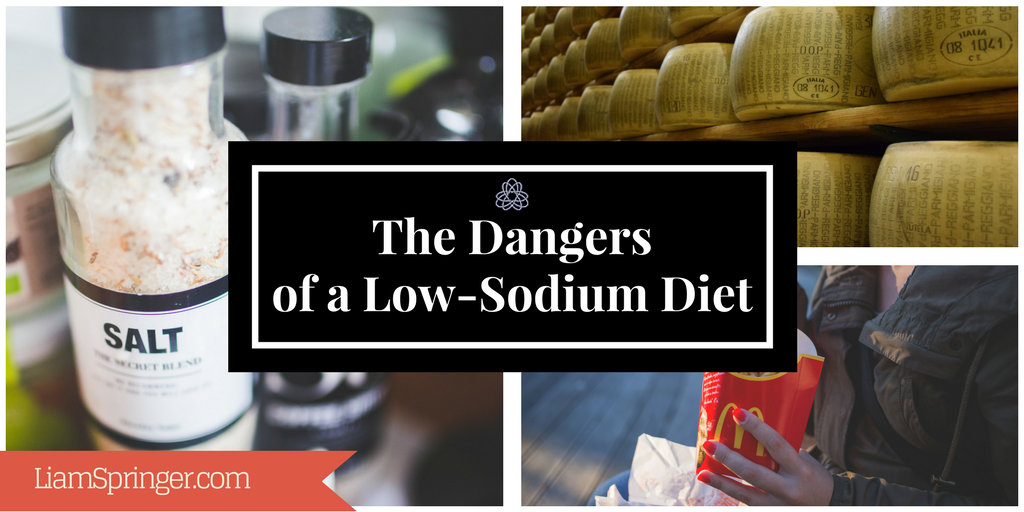
Sodium often gets a bad rap. You may have heard that the average American diet contains way too much sodium, and that the recommended amount is only about 1 teaspoon per day—especially for people at risk for heart disease. However, the strange idea that salt causes hypertension (high blood pressure) is the opposite of what really happens. A low-sodium diet actually causes high blood pressure and increases the risk of heart disease by increasing the release of a hormone called aldosterone. There have been studies and even an article in The New York Times pointing out this paradox. While it’s true that extremely high sodium is bad for your health, it’s important to realize that the opposite is also true. Too little sodium can result in hyponatremia and a number of undesirable health conditions.
Sodium is a vital electrolyte allowing for cell function. It should be incorporated into the diet in a balanced manner vs. being drastically reduced or cut out entirely.
What Are the Consequences of a Low-Sodium Diet?
Worst case scenario: Acute sodium deficiency, or hyponatremia, leads to nervous and cardiorespiratory collapse and eventually death (such as in cases of dehydration). However, it’s important to realize that it does not take an acute life threatening state of hyponatremia to have long-term life threatening consequences. Short of acute hyponatremia, there are many other undesirable developmental consequences associated with a low-sodium diet. Calcification of the vascular system, high blood pressure, and impaired kidney function are all long-term consequences associated with high aldosterone—the pro-inflammatory hormone that’s present when sodium is low.
Salt should be kept fairly stable in the diet to avoid undesirable health issues—including high blood pressure, vascular problems, kidney problems, and artifacts of compromise.
Wait, So Salty Snacks Are Good for You?
Not necessarily. Just because a food has sodium in it does not mean it is good for you. Beware of packaged foods, fast foods, and junk foods in which salt is used as a flavor enhancer. These foods are unhealthy for other reasons—not because they contain salt.
Okay, So What Are Healthy Sources of Sodium?
Sea salt and table salt without additives as well as baking soda are great sources of sodium. Salty cheeses are also good. Avoid sodium-containing additives such as Sodium Nitrate (the carcinogenic compound often found in cured meats) and MSG (the flavor enhancer often found in restaurant foods as well as the flavor packets and cubes for making broths). Also, be sure to balance your salt intake with potassium and proper hydration.
Remember: Salt should be kept fairly stable in the diet. As long as you don’t hit the extremes of salt restriction or consuming extremely high amounts of salt, you will be able to maintain the sodium levels in the blood fairly easily—without having to worry about the occasional over- or under-salted meal or snack.
For more info on how to maintain proper hydration and avoid the dangers of a low-sodium diet, check out my previous posts: How Much Water Should Your Drink? and 5 Simple Rules for Hydration.
Want to try an exercise method that’s great for hydration and tissue health, as well as flexibility and range of motion? Come to one of my BTMAflex classes in St. Louis! For more insights on the latest topics in health and nutrition, sign up for my monthly newsletter.







2 Comments